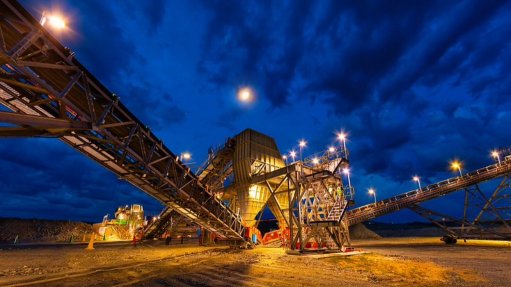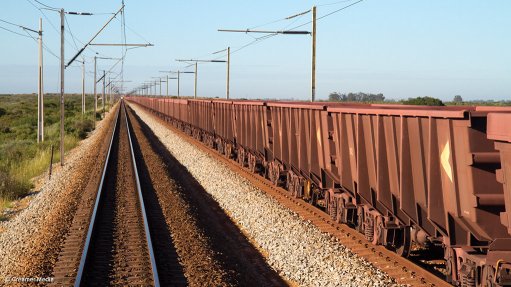Strategy outlines constructive value of wood
The University of Pretoria (UP) has played a significant part in the Department of Trade, Industry and Competition’s (DTIC’s) Promotion of Timber Construction Steering Committee, which aims to address the promotion of the forest sector’s role in the green economy, states UP senior lecturer Schalk Grobbelaar.
The steering committee deals with wood products, wood energy and forest management forestry policy and the administrative framework, including the sustainable building, production, consumption and valuation of forest ecosystem services.
UP established a partnership with forestry company York Timbers in 2021. The partnership entailed the establishment of a transdisciplinary chair in data-driven wood structural engineering for a sustainable built environment and African bioeconomy.
The chair will facilitate interdepartmental research from various schools and institutes, including the Forestry and Agricultural Biotechnology Institute; the Department of Biochemistry, Genetics and Microbiology; the School of Engineering; the School for the Built Environment; the School for Information Technology; and the Graduate School of Technology Management.
The chair and research laboratory are hosted in the newly constructed Engineering 4.0 building at UP’s Hillcrest campus. The research group also participates in the DTIC’s Promotion of Timber Construction Steering Committee.
Grobbelaar adds that UP has provided many inputs for the committee, while several webinars, sponsored by industry associations Sawmilling South Africa, the South African Wood Preservers Association and the DTIC, were also held this year.
Grobbelaar also highlights the recent development of the Forest Products Research Strategy.
While he adds that the development of the Forest Products Research Strategy was a separate process from the steering committee, many members taking part in the Promotion of Wood Culture Programme contributed to the development of the Forest Products Research Strategy.
The strategy details the potential for engineered wood products (EWPs) and mass timber, which have significant potential for market growth globally.
A key feature of EWPs is that the smaller timber components are reconstructed into either standard or bespoke components that have dimensional, strength, aesthetic and durability attributes that exceed those of basic timber properties.
Grobbelaar emphasises that EWPs have key applications in construction, especially in multistorey buildings and residential housing, as well as furniture manufacturing.
Further, the strategy describes the local EWP market as “fledgling”, and that “stakeholders interviewed concur that a market chasm exists, characterised by stated, but unproven, market demand, and a manufacturing industry unable to invest in EWP manufacturing capability in the absence of proven market demand”.
R&D
The report also points out that research and development (R&D) for EWPs is significantly underfunded locally, and that a smart EWP R&D strategy can contribute to establishing an EWP industry and various parts of the potential EWP value chain.
The strategy reveals that stakeholder consultations have revealed several key strategic requirements for EWP R&D.
Firstly, a strategic goal of establishing an EWP industry exceeding R1-billion (2022 value) by 2030 is attainable. The scale is attainable, and the resource to which value can be added is available without causing international competition for resources.
An EWP R&D leadership and collaboration forum, which is required to coordinate and direct key strategic R&D activities, including funding and R&D execution, needs to be established.
Existing fledgling R&D activities among science, technology and innovation organisations need to be directed in a collaborative approach. To this end, a virtual EWP Research Institute has been proposed.
R&D outputs also need to result in pilot projects, demonstrating feasibility and serving as a showcase for marketing, promotional and dissemination activities.
Three key research themes have also been identified: product development, mass timber design, and technology transfer capacity building.
Further, an innovative and collaborative R&D funding approach comprising funding from various sources, also needs to be developed.
These key strategic requirements form the basis for a proposed strategic roadmap for EWP R&D, as set out in the final strategy document.
Sustainable Construction
Grobbelaar states that factors such as fire safety, mitigating climate change and global supply chain constraints make wood, mass timber and other EWPs ideal to use in local construction projects going forward.
He says that, when using mass timber, exposure to fire results in a protective layer being formed around the wood.
The exposed surface of the mass timber or EWP burns, which forms an insulating, charred layer that protects interior wood from damage.
This layer delays the onset of heating of the core of wood inside the mass timber and EWP, as air and fire are prevented from spreading owing to the solid block nature of mass timber.
This comes in addition to newer technologies and materials that can be applied to improve the fire resistance of mass timber structures.
Mass timber is more resistant to fire, compared with other building materials – such as steel, which bends and collapses quicker than mass timber at certain temperatures – consequently providing more time for occupants to exit a building, should a fire occur.
Grobbelaar emphasises the sustainable advantage of using wood in construction, particularly as other construction materials and their production – such as steel and cement – contribute to global greenhouse-gas emissions, while wood stores carbon.
“In many cases, the relative strength-to-weight ratio for mass timber is better than that of steel, so for the same amount of mass, you get more strength.”
Mass timber also provides advantages in terms of speed of construction, particularly compared with other materials, such as cement, which involves a waiting time to dry, he adds.
Wood structures and components can often be assembled off site, resulting in significant time savings for a project.
“There is also an ideal supply of wood materials available locally. The forestry sector is relatively small, but there is potential to grow it substantially and improve the available capacity and resources, providing another benefit,” Grobbelaar concludes.
Comments
Press Office
Announcements
What's On
Subscribe to improve your user experience...
Option 1 (equivalent of R125 a month):
Receive a weekly copy of Creamer Media's Engineering News & Mining Weekly magazine
(print copy for those in South Africa and e-magazine for those outside of South Africa)
Receive daily email newsletters
Access to full search results
Access archive of magazine back copies
Access to Projects in Progress
Access to ONE Research Report of your choice in PDF format
Option 2 (equivalent of R375 a month):
All benefits from Option 1
PLUS
Access to Creamer Media's Research Channel Africa for ALL Research Reports, in PDF format, on various industrial and mining sectors
including Electricity; Water; Energy Transition; Hydrogen; Roads, Rail and Ports; Coal; Gold; Platinum; Battery Metals; etc.
Already a subscriber?
Forgotten your password?
Receive weekly copy of Creamer Media's Engineering News & Mining Weekly magazine (print copy for those in South Africa and e-magazine for those outside of South Africa)
➕
Recieve daily email newsletters
➕
Access to full search results
➕
Access archive of magazine back copies
➕
Access to Projects in Progress
➕
Access to ONE Research Report of your choice in PDF format
RESEARCH CHANNEL AFRICA
R4500 (equivalent of R375 a month)
SUBSCRIBEAll benefits from Option 1
➕
Access to Creamer Media's Research Channel Africa for ALL Research Reports on various industrial and mining sectors, in PDF format, including on:
Electricity
➕
Water
➕
Energy Transition
➕
Hydrogen
➕
Roads, Rail and Ports
➕
Coal
➕
Gold
➕
Platinum
➕
Battery Metals
➕
etc.
Receive all benefits from Option 1 or Option 2 delivered to numerous people at your company
➕
Multiple User names and Passwords for simultaneous log-ins
➕
Intranet integration access to all in your organisation


















